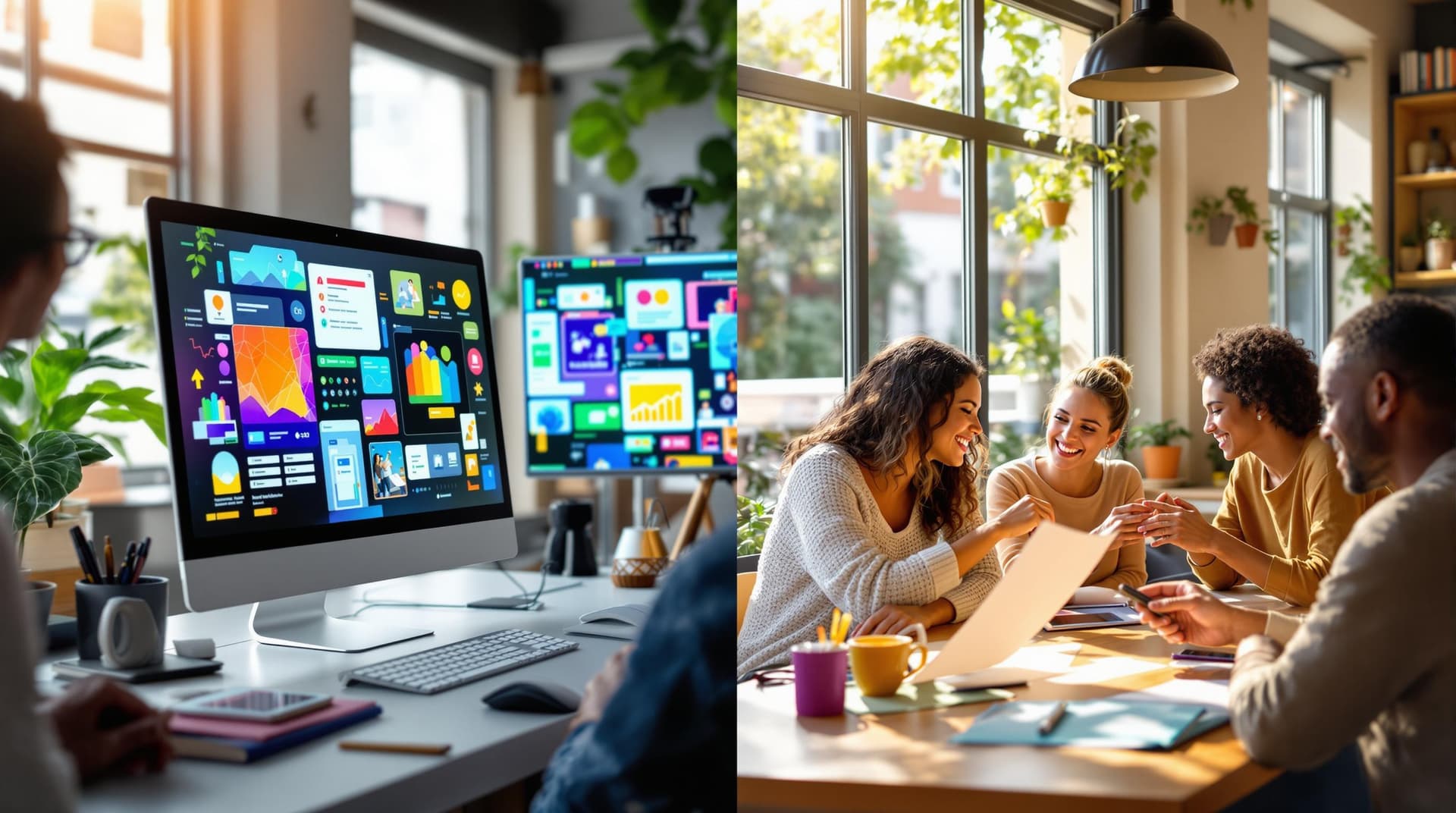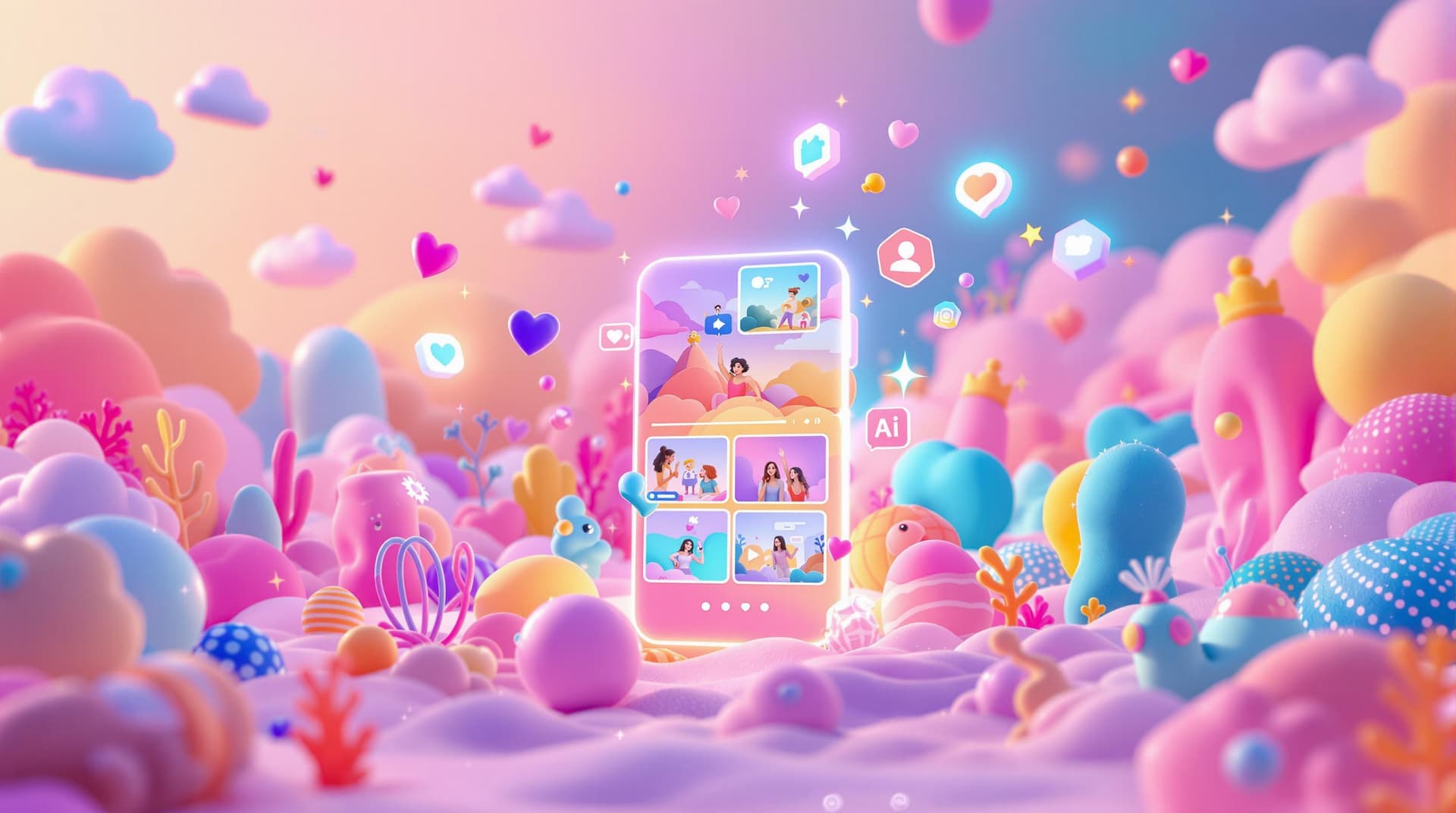
AI video generation is transforming how businesses create content by automating video production using advanced algorithms. This technology enables faster, more cost-effective, and scalable video creation while maintaining brand consistency. Here’s what you need to know:
- How It Works: AI tools use deep learning methods like GANs and VAEs to analyze data, generate storyboards, and produce videos from text or improve existing footage.
- Business Benefits: Companies save time and cut costs, boost engagement with personalized content, and scale video production efficiently.
- Key Features to Look For: Multi-language support, brand consistency tools, analytics, and scalable video creation options.
- Challenges: Authenticity issues, potential biases, and legal/ethical concerns around copyright and transparency.
AI video generation is growing rapidly, offering businesses a way to create impactful, tailored content at scale. Whether for marketing, education, or social media, this technology is reshaping video production.
Pixverse AI V4: The Best AI Video Generator with Voice
Main Advantages
AI video generation makes it easier to scale content production, offering clear benefits like improved efficiency and stronger brand presence.
Cost and Time Savings
AI tools significantly cut down on production costs and time. For example, using Amazon SageMaker, Gan.AI reduced video generation time from 4 minutes to just 30–40 seconds per request.
- AI-generated ads are 28% cheaper per result and 31% cheaper per click compared to traditional user-generated content ads.
- Platforms like Elai save production teams about 5 hours per video.
Mass Production with Personalization
AI makes it possible to produce large quantities of videos while still tailoring them for specific audiences. Gan.AI achieves:
- Custom video creation in just 50 seconds on average.
- The ability to handle 3,000 simultaneous video requests.
- Production of 1 million unique videos in only 3 hours.
A great example is Agoda's collaboration with Gan.AI, which resulted in over 200 personalized 20-second ads. These ads generated more than 100 million impressions, 10 million views, and a 2.5× increase in brand awareness.
Brand Consistency
AI video platforms help maintain a consistent brand identity, even across large-scale projects. For instance, Klarna saved around 37% in costs - about $10 million annually - by integrating AI into their marketing, all while keeping their branding intact.
Features that ensure brand consistency include:
- Automated enforcement of style guidelines.
- Access to pre-approved asset libraries.
- Built-in content review systems.
- Optimization for various platform formats.
This consistent approach strengthens brand recognition and builds customer loyalty over time.
Common Use Cases
AI video generation is changing how businesses create and share video content across different platforms. Below are some practical ways it's being used to deliver real results.
Social Media Content
AI tools make it possible to create engaging content quickly and at scale. Some companies have seen impressive outcomes with AI-generated videos:
- Ringwave Media saw a 130% boost in click-through rates and cut costs by 96% using AI avatar videos instead of traditional production methods.
- 1MORE reported that their AI-generated videos performed on par with traditional agency and KOL (Key Opinion Leader) ads in terms of click-through rates and cost per click.
The real advantage? AI allows businesses to produce and test multiple video versions quickly, making it perfect for social media campaigns. But its usefulness doesn’t stop there.
Business Video Types
Beyond social media, AI video generation supports a wide range of business needs across industries. Here are some examples:
Educational Content
- Training videos and tutorials
- Product demos
- Customer onboarding materials
- Educational videos, which can improve information retention by up to 75%
Marketing and Promotional
- Personalized ad campaigns
- Product launches and brand storytelling
- Customer testimonial videos
One standout example is DeepReel's partnership with New Strait Times, Malaysia's oldest newspaper. They replaced traditional broadcasting setups with AI-powered video news production, showing how AI can deliver professional-grade content while reducing costs.
The demand for AI in video production is growing fast. From 2023 to 2030, the market is expected to expand at an annual growth rate of 19.7%. This growth is fueled by businesses needing efficient ways to meet increasing consumer demand - 54% of consumers want more video content from the brands they follow.
This shift benefits businesses of all sizes. Larger companies can maintain brand consistency while cutting costs, and smaller businesses can create professional-quality videos without the high price tag of traditional methods.
sbb-itb-d822133
Selecting AI Video Software
When choosing AI video software, it's important to weigh the features, functionality, and how well they match your business objectives.
Features to Look For
Here are some of the most important features to consider:
Core Capabilities
- Support for multiple languages to reach a global audience
- Tools to ensure brand consistency
- Performance analytics to track results
- AI-driven script optimization for better engagement
- A variety of AI personas to suit different needs
- Ability to adjust content for cultural nuances
Technical Needs
- High-quality video output
- User-friendly interface
- Scalable options for growing content demands
- Seamless integration with existing marketing tools
These features can help streamline your video creation process and align it with your goals.
A Look at Top Tools
MagicUGC stands out with impressive stats and features:
- Over 58,980 active users
- A 4.98/5 rating from 10,000+ reviews
- Beta users of MagicUGC Boost™ reported a 275% boost in conversion rates
| Plan | Monthly Cost | Key Features | Best For |
|---|---|---|---|
| Basic | $149 | 20 AI UGC videos, 2 AI avatars | Small businesses |
| Pro | $179 | 50 AI UGC videos, 5 AI avatars | Growing eCommerce |
| Turbo | $249 | Unlimited videos, 10 AI avatars | Agencies |
After exploring tools like MagicUGC, narrow your focus by considering your unique requirements.
Factors to Guide Your Choice
Here are some key aspects to evaluate:
Budget and ROI
- Assess the upfront cost and future scalability
- Consider the potential return based on the features offered
Support for Growth
- Check the platform's capacity to handle increased content demands
- Look at the number of available AI personas and templates
- Ensure it includes tools to track performance
Quality and Consistency
- Look for features that protect your brand image
- Verify the platform delivers consistent output
- Explore options for emotional intelligence and predictive performance tools
Choosing the right AI video software ensures your business can create impactful, on-brand content efficiently.
Current Limitations
Understanding the limitations of AI video generation helps set realistic expectations and encourages responsible use.
Output Quality Issues
AI-generated videos often face technical hurdles that can impact their effectiveness. As Digital Brew explains:
"Another one of the most significant criticisms of videos made by generative AI is the loss of authenticity and creativity. While AI can mimic human creativity to a certain extent, it lacks the genuine emotional depth and unique perspective that human creators bring to their work".
| Issue | Impact | Solution |
|---|---|---|
| Authenticity Gap | Lower viewer trust and engagement | Combine AI tools with human creativity |
| Data Quality | Inconsistent video output | Ensure high-quality training data |
| Bias Problems | Reinforcement of stereotypes | Audit content regularly and diversify data |
| Performance Issues | Increased workload for teams | Maintain human oversight |
Addressing these challenges is essential for producing high-quality videos while also adhering to ethical standards.
Legal and Ethics Guide
Legal concerns add another layer of complexity to AI video production.
Copyright Considerations
The U.S. Copyright Office has made its position clear:
"will not knowingly grant registration to a work that was claimed to have been created solely by machine with artificial intelligence".
"The general consensus in the legal world seems to be that where AI is a tool in the hands of a human, the output may be protectable. Where the AI creates without or with very limited human guidance or intervention, however, the output is unlikely to be protectable".
Ethical Guidelines
- Transparency: Clearly label content, disclose AI usage, and maintain detailed records.
- Content Verification: Audit scripts, check for factual accuracy, and identify potential biases.
- Protection Measures: Use digital watermarks, include metadata, and enforce consent protocols.
The risks are substantial. For instance, 90–95% of deepfake videos since 2018 have involved non-consensual content.
Practical Safeguards
"I think this is just another reminder for you to disclose that you're using these technologies in your work".
To mitigate risks, consider these steps:
- Regularly audit AI systems used in marketing.
- Verify the quality and diversity of training datasets.
- Follow anti-discrimination laws.
- Implement safety protocols.
- Maintain human oversight throughout the process.
These limitations highlight the importance of careful and thoughtful use of AI in video production.
Conclusion
Key Takeaways
| Metric | Result |
|---|---|
| Conversion Impact | 275% increase |
AI video generation offers three primary advantages:
- Round-the-clock content creation, cutting down production costs
- Consistent messaging across all campaigns
- Broader audience reach with multi-language support
These benefits make AI video solutions a practical choice for businesses aiming to scale their content efforts.
Steps to Get Started
-
Select the Right Platform
- Opt for tools with features like AI persona targeting and script optimization.
- Try platforms like MagicUGC, which provides a free trial with full access to these features.
-
Plan Your Implementation
- Leverage AI analytics to monitor and refine engagement.
- Begin with essential features, then explore options like:
- Adapting content for specific markets
- Targeting specific demographics
- Localizing content for different languages
AI video creation is moving toward more emotionally aware content and predictive performance tools. By adopting these technologies early, businesses can stay ahead, delivering relatable and dynamic content that connects with their audience.



